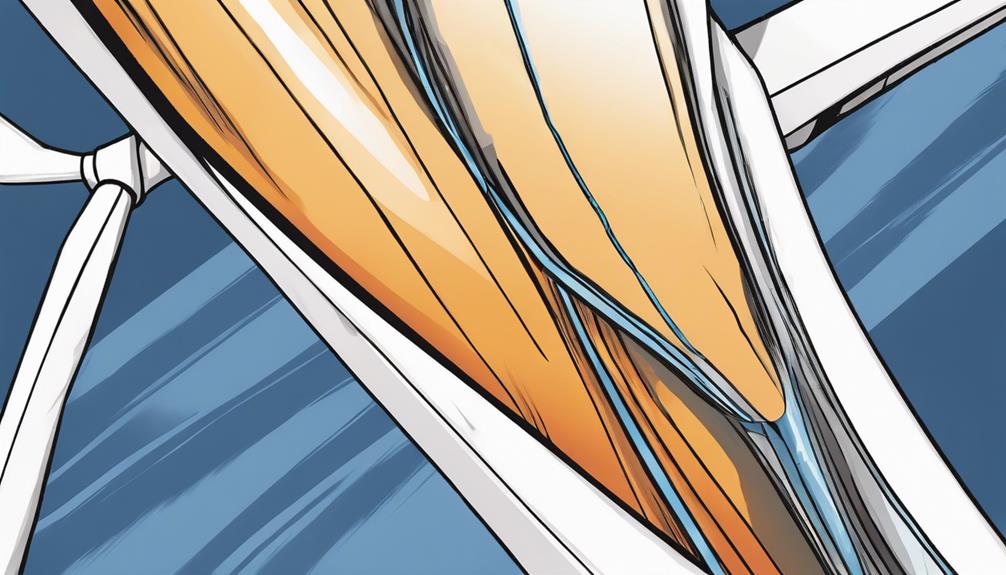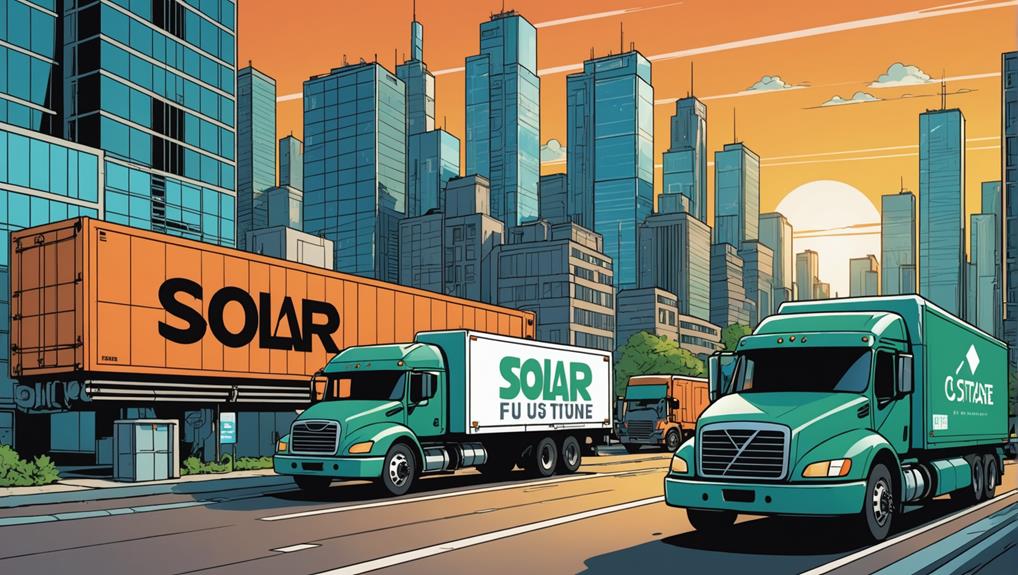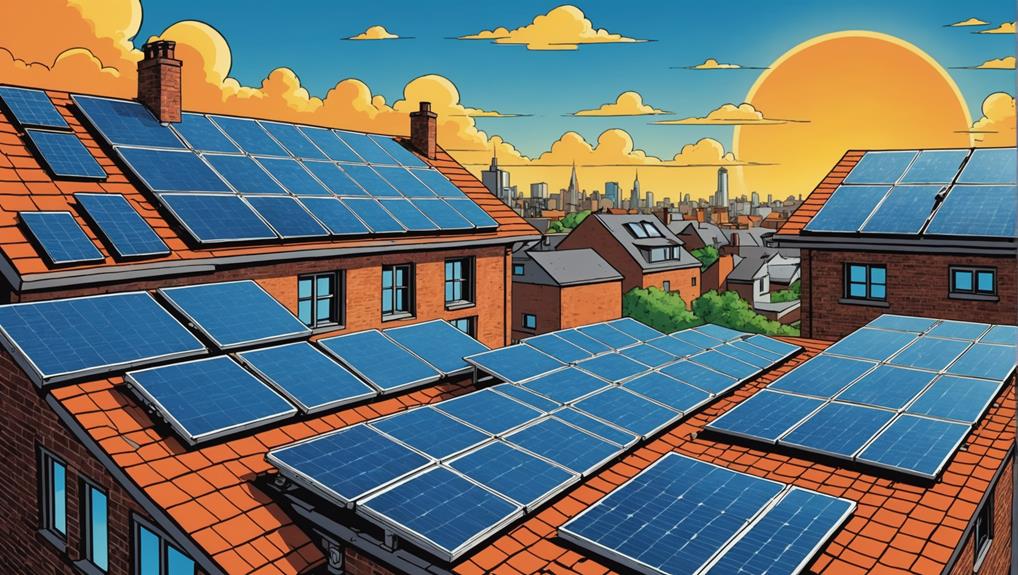In wind turbine blade design, twisting is vital for boosting aerodynamic efficiency. The twist changes the angle along the blade, adapting to varying wind speeds for peak performance. This adjustment guarantees ideal angles against different wind conditions, maximizing energy extraction. Understanding the importance of blade twist is essential to enhancing the overall efficiency of wind turbines. Explore how this design element revolutionizes the efficiency and performance of wind turbine blades.
Key Takeaways
- Blade twist optimizes aerodynamic performance by adjusting the angle of attack along the blade.
- It helps maintain ideal angles against varying wind speeds, enhancing energy extraction efficiency.
- Twist reduces drag and improves energy extraction capabilities of the turbine.
- Wind speed significantly influences the performance of the blade twist design.
- Blade twist is essential for maximizing efficiency and power output of wind turbines.
Reshaping Blade Performance
To improve wind turbine performance, reshaping the blades has been a key focus in recent research efforts. Blade twist, customized airfoils, and experimental methods play essential roles in enhancing aerodynamic efficiency.
Researchers supported by the Department of Energy have explored designing airfoils that reduce leading-edge soiling effects in wind turbines. By incorporating thinner airfoils near the blade tip, they've successfully increased the overall aerodynamic efficiency of the turbines.
The need for customized airfoils for different sections of wind turbine blades has become evident through studies conducted by the National Renewable Energy Laboratory (NREL) and Airfoils Inc. These organizations have used experimental methods alongside computational analyses to reshape blade performance.
Their findings have shown that by making airfoil leading edges less sensitive to soiling effects, the overall efficiency of wind turbines can be notably improved. This emphasis on blade design highlights the importance of continuously refining and customizing the aerodynamics of wind turbine blades for best performance.
Airfoil Family Prioritization
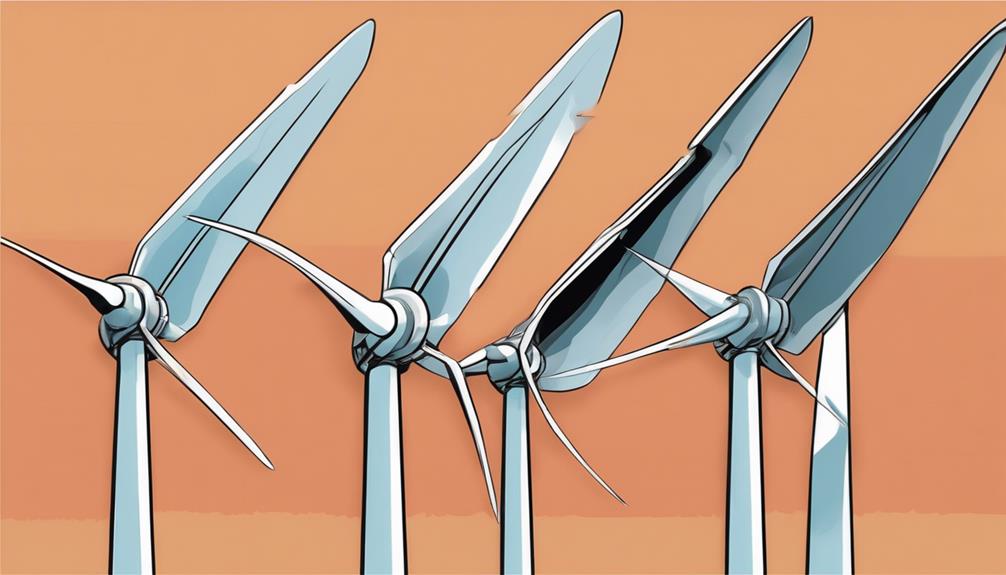
You need to understand the significance of efficiency standards set by NREL's customized airfoil designs. These innovations have revolutionized wind turbine performance, leading to reduced soiling effects and increased energy production.
The impact of NREL's airfoil families extends beyond research, with multiple patents and commercial licenses secured.
Efficiency Standards Set
When prioritizing airfoil families for wind turbines, performance standards were set to guarantee peak aerodynamic and structural efficiency. Seven airfoil families were developed through a DOE-funded effort, each focusing on specific aerodynamic requirements to enhance blade design effectiveness. These families played a vital role in establishing industry benchmarks for wind turbine performance.
Efficiency standards ensured that the airfoil families not only met but exceeded expectations, leading to notable advancements in annual energy production. NREL's customized airfoil designs, a result of these standards, demonstrated a remarkable 10%-35% increase in energy production compared to traditional airfoils. This outstanding performance earned NREL the prestigious R&D World R&D 100 award in 1991.
The success of NREL's airfoil families, with 12 commercial licenses already in place, continues to impact the wind energy sector positively. By adhering to performance standards, these airfoils haven't only improved performance but have also contributed significantly to reducing industry-wide wind energy costs.
NREL's Customized Designs
How did NREL prioritize airfoil families for wind turbines to enhance performance standards and efficiency in blade design?
NREL strategically approached the development of customized airfoil families to revolutionize wind turbine aerodynamics and optimize turbine blade designs. The prioritization process involved several key considerations:
- Aerodynamic efficiency: Focusing on maximizing airflow over the blade surface to enhance energy capture.
- Structural integrity: Ensuring the airfoil design could withstand varying wind conditions while maintaining durability.
- Industry collaboration: Partnering with companies to commercialize the customized airfoil families and drive widespread adoption.
- Performance enhancements: Implementing the new airfoil families to boost annual energy production by 10%-35% compared to conventional designs.
These efforts resulted in NREL's innovative airfoil families setting new efficiency standards for wind turbine blades and receiving recognition through prestigious awards and patents, showcasing the significant impact of customized designs on the renewable energy sector.
Award-Winning Designs
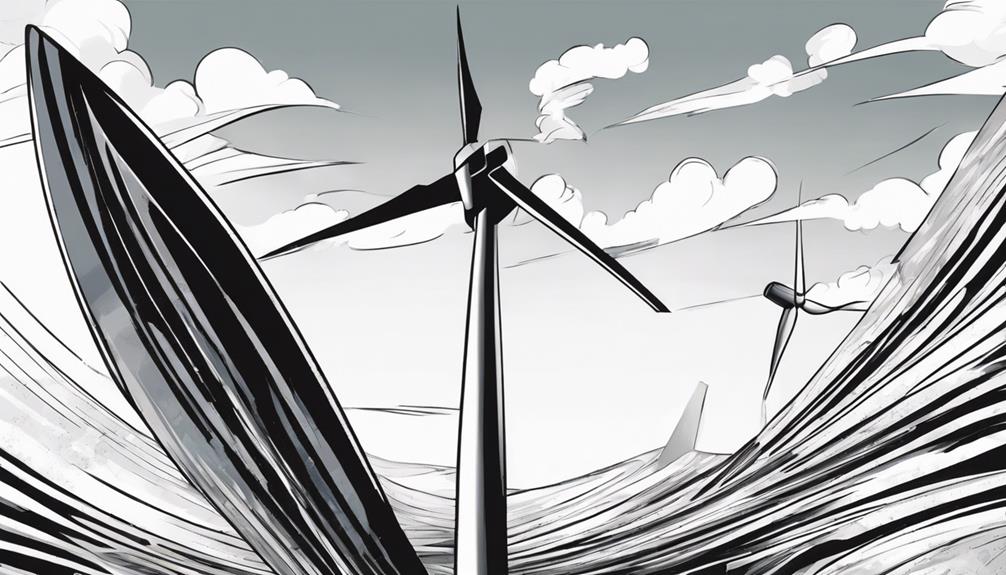
You'll be intrigued by the impact of design innovations on wind turbine blades' efficiency.
Discover how aerodynamic advancements have greatly boosted performance and energy production.
Learn about the commercial success achieved through these award-winning designs.
Design Innovations Impact
Among the award-winning designs in wind turbine blade design, NREL's innovative airfoil designs have had a notable impact on industry standards and energy production efficiency.
NREL's award-winning airfoil designs reduced soiling effects and increased annual energy production by 10%-35%. The airfoil families developed by NREL set efficiency standards in wind turbine blade design.
NREL obtained five U.S. patents and multiple European patents for their innovative airfoil designs. Industry companies and NREL established 12 commercial licenses based on the successful airfoil designs. These customized airfoils greatly improved wind turbine performance, leading to reduced industry-wide wind energy costs.
Aerodynamic Efficiency Benefits
NREL's award-winning airfoil designs, known for their significant reduction in soiling effects and substantial increase in annual energy production, have set a new standard for aerodynamic efficiency benefits in wind turbine blade design.
These innovative airfoils, with carefully crafted blade twist and optimized airfoil shape, have proven to enhance the overall performance of wind turbines.
By reducing soiling effects and increasing energy production by 10%-35%, NREL's designs have garnered recognition in the form of the R&D World R&D 100 award in 1991.
The impact of these airfoils extends beyond accolades, as evidenced by the five U.S. patents and numerous European patents held by NREL for their cutting-edge designs.
Additionally, the commercial success achieved through 12 licenses between industry companies and NREL underscores the practical application and demand for these aerodynamically efficient airfoils in modern wind turbine design.
Commercial Success Achieved
With their award-winning airfoil designs, NREL has achieved remarkable commercial success in the wind energy industry. These designs have significantly impacted the industry by increasing annual energy production by 10%-35%. The prestigious R&D 100 award in 1991 recognized the innovative nature of NREL's airfoil families.
NREL's groundbreaking airfoil technology hasn't only received five U.S. patents but also multiple European patents, solidifying their position as leaders in the field. Furthermore, industry collaborations have resulted in 12 commercial licenses for NREL's customized airfoil designs, showcasing widespread acceptance and adoption.
- NREL's airfoil designs have reduced wind energy costs industry-wide.
- The commercial success of NREL's airfoil families has had a lasting impact on the wind energy sector.
- The innovative blade twist incorporated in NREL's designs has contributed to their commercial success.
- NREL's airfoil technology has revolutionized the wind energy industry, making significant strides towards sustainable energy solutions.
Longevity of Airfoil Families
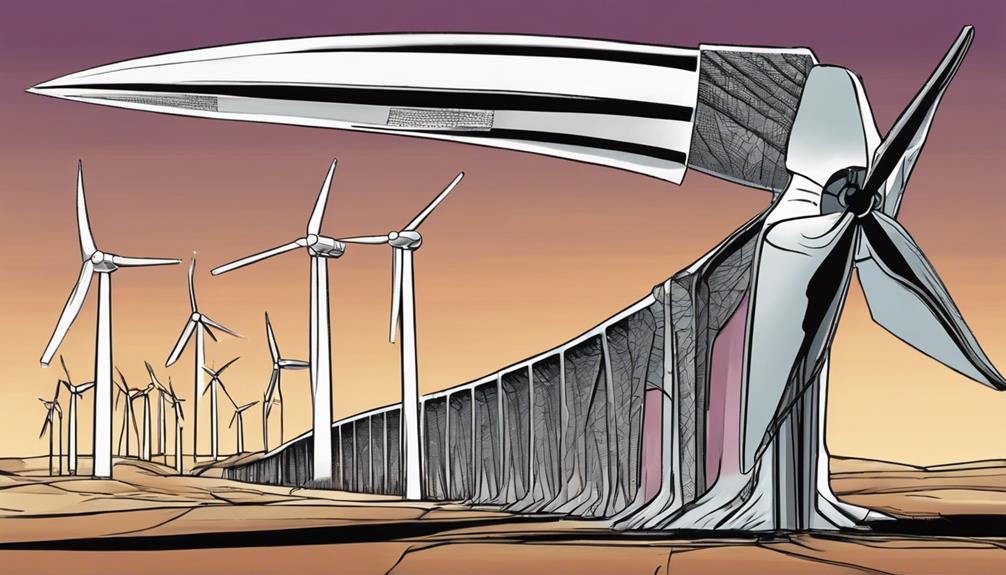
The lasting significance of airfoil families designed in the early 1990s by NREL highlights the longevity of their impact in the wind turbine industry.
These airfoils, a product of substantial DOE investments, have played a pivotal role in enhancing wind turbine performance. Insights gained from DOE-funded research haven't only influenced the development of newer airfoils but have also led to significant reductions in wind energy costs industry-wide.
The customization of airfoils based on these early designs has notably improved wind turbine performance, showcasing the success of DOE-supported research efforts in this field. The continued utilization of NREL airfoil families in commercial wind turbines today underscores their effectiveness and lasting impact on the industry.
This longevity demonstrates how the initial blade twist and design considerations have stood the test of time, proving to be instrumental in shaping the efficiency and effectiveness of modern wind turbine technology.
Blade Efficiency Optimization
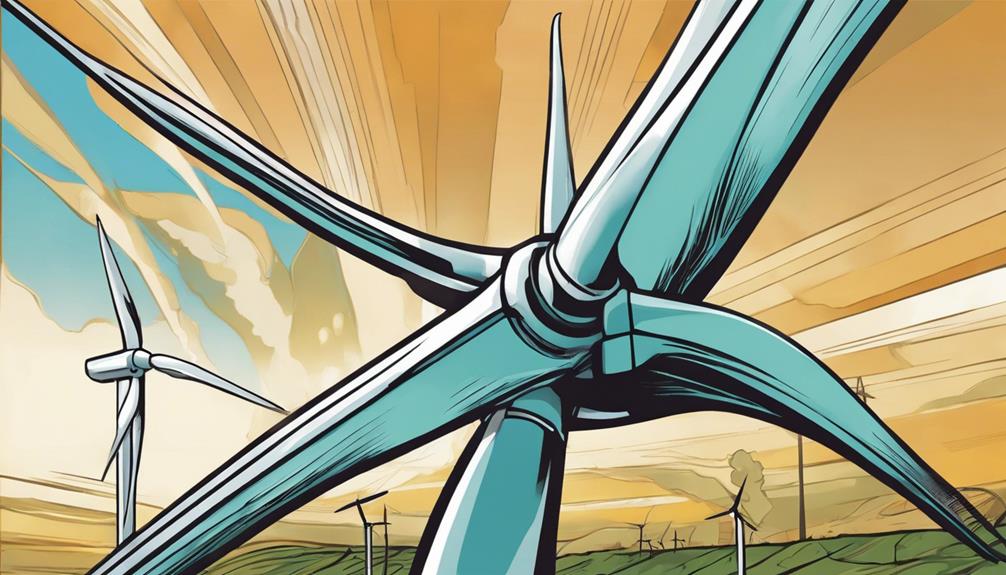
Enhancing blade efficiency in wind turbines involves strategically adjusting the blades to improve energy extraction through enhanced aerodynamics. The blade twist changes the angle of attack along the blade's length, improving efficiency by reducing drag and increasing lift generation.
To further improve blade efficiency, consider the following:
- Aerodynamic Profiles: Ensuring the blade design is tailored for airflow can significantly impact efficiency.
- Lift Creation: Enhancing lift generation through blade twist can boost energy extraction capabilities.
- Rotational Speeds: Aligning the blade twist with best rotational speeds can maximize efficiency.
- Wind Angle Adjustment: Twisting the blades allows for adjustment to the wind angle they face, enhancing performance.
Design Principles Overview
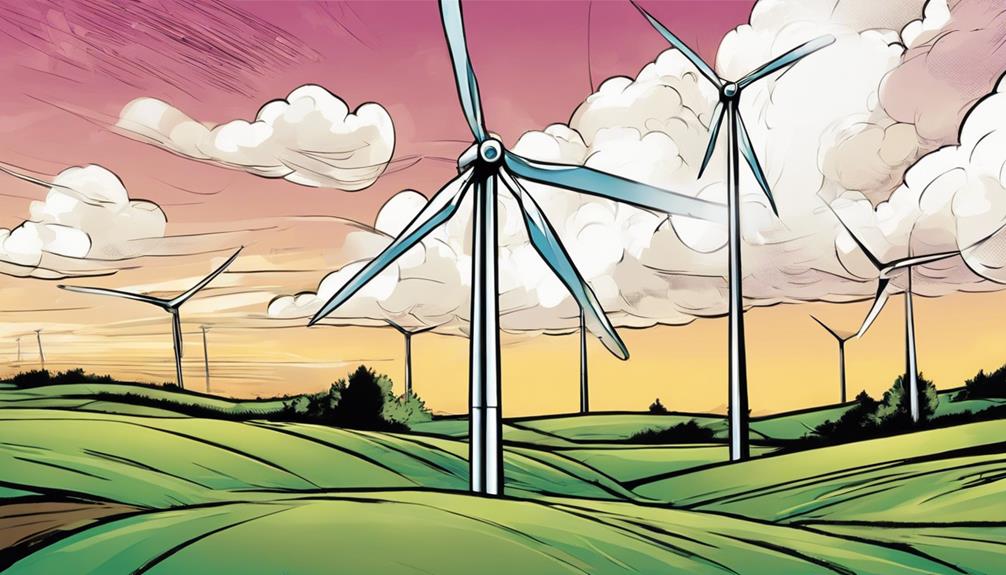
To comprehend the foundation of wind turbine blade efficiency, one must grasp the fundamental design principles that govern aerodynamic performance. Blade twist plays an integral role in optimizing the aerodynamic performance of wind turbine blades. By incorporating blade twist, designers can guarantee that the blade maintains ideal angles against varying wind speeds, ultimately leading to drag reduction and enhanced overall efficiency. The primary focus of the design principles related to blade twist is to maximize energy extraction from the wind to generate electricity efficiently.
| Design Principle 1 | Design Principle 2 | Design Principle 3 |
|---|---|---|
| Blade Twist for Aerodynamic Performance | Drag Reduction | Maximizing Energy Extraction |
Understanding these design principles is vital for engineers and designers to create wind turbine blades that can harness the power of the wind effectively and contribute to sustainable energy generation.
Wind Speed Impact Analysis

Understanding how wind speed influences blade performance is vital in designing efficient wind turbine blades. The impact of wind speed on blades is crucial for optimizing energy extraction.
Here are some key points to keep in mind:
- Blade Angle of Attack: Wind speed variation along the blade length influences the ideal blade angle of attack for maximum efficiency.
- Blade Twist: Varying wind velocities from root to tip necessitate blade twist adjustments to maintain optimal performance.
- Energy Extraction: Decreasing the angle of attack as wind speed increases is fundamental for extracting the most energy from the wind.
- Visualization Tools: Diagrams and vector triangles aid in understanding how wind speed affects blade angle along the turbine, assisting in designing blades for varying wind conditions.
Author's Engineering Articles
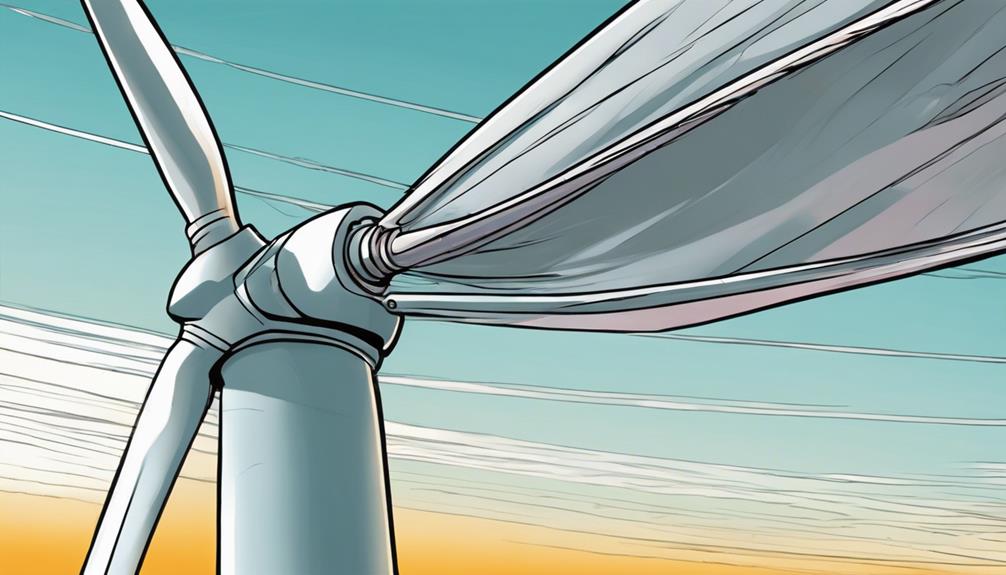
Discover the author's varied range of engineering articles covering topics such as wingtip vortices, vortex generators, and electric vehicles for valuable insights into engineering concepts.
Explore the author's content to gain a thorough view of wind turbines, blade design, and other engineering topics.
By engaging with these articles, you can deepen your understanding of complex engineering principles and their practical applications in renewable energy technologies.
The author's articles offer a wealth of knowledge on renewable energy, particularly focusing on wind turbines and their intricate blade design.
Through these insightful pieces, you can broaden your perspective on the engineering concepts behind renewable energy solutions.
The content provided by the author serves as a valuable resource for those looking to appreciate the impact of renewable energy technologies on the industry.
Immerse yourself in these articles to enhance your understanding of blade design, wind turbines, and various engineering concepts shaping the future of renewable energy.
Renewable Energy Insights
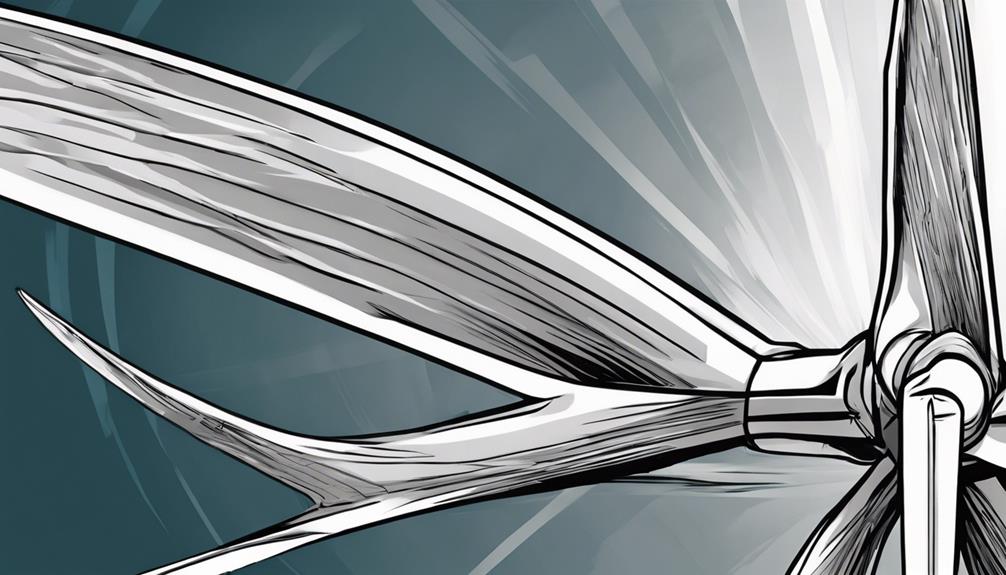
Professionals often analyze best calculations for wind turbine tip speed ratio to enhance energy extraction efficiency.
When delving into renewable energy insights, considering various aspects of wind turbine design is pivotal for enhancing blade efficiency.
Determining the ideal height for wind turbines plays a significant role in maximizing power output and efficiency.
Addressing skills and knowledge gaps in wind power integration is vital for the industry's growth.
Comparing different wind turbine types aids in understanding their advantages and selecting the most suitable design.
Ongoing advancements in wind turbine blade design focus on optimizing wind energy capture and overall performance.
Frequently Asked Questions
Why Are Wind Turbine Blades Twisted?
Wind turbine blades are twisted to optimize aerodynamic performance and energy extraction. The twist changes the angle of attack along the blade, reducing drag and improving efficiency. It allows for better control of lift distribution for enhanced performance.
Why Do Wind Turbines Have Twists?
Wind turbines have twists to optimize aerodynamic efficiency. They adjust the blade angle across the length for better performance. This design boosts energy extraction by reducing drag, increasing lift, and adapting to varying wind speeds.
How Does Blade Twist Affect Wind Turbines?
Blade twist in wind turbines optimizes aerodynamic performance, adjusting angle of attack along the blade for efficient energy extraction. It matches wind speed variations, enhancing overall efficiency and power output while reducing drag.
Why Is a Blade Twisted Along Its Length Rather Than Its Width?
When designing wind turbine blades, engineers twist them along their length rather than width to optimize aerodynamic performance. This twist adjusts the angle of attack at different sections, reducing drag, improving lift distribution, and enhancing efficiency.
What is the Relationship Between the Weight of a Wind Turbine Blade and its Twisted Design?
The relationship between wind turbine blade weight and its twisted design is crucial for efficient energy production. A lighter blade allows for easier rotation, while a twisted design enables optimal wind capture. Balancing these factors is essential for maximizing power output and minimizing stress on the turbine.
Does the Weight of a Wind Turbine Blade Impact its Twisted Design?
The weight of a wind turbine blade does impact its twisted design. The distribution of the wind turbine blade weight can affect its aerodynamic performance and can lead to fatigue issues. Engineers carefully consider the weight distribution when designing and manufacturing wind turbine blades to optimize their efficiency and longevity.
How Do the Twisted Design and Serrated Edges of Wind Turbine Blades Affect Their Functionality?
The reasons for serrated wind turbine blades are to improve functionality. The twisted design and serrated edges help the blades capture more wind energy and increase efficiency. This design also reduces noise and vibration, making the turbines more reliable and effective in producing renewable energy.
Conclusion
As the wind turbine blade twists, it symbolizes adaptability in the face of changing winds. Just like the blade adjusts to optimize performance, we too must be flexible in our approach to challenges.
Embrace the design of the turbine blade as a reminder to be resilient and open to new possibilities, always seeking to improve and innovate.
